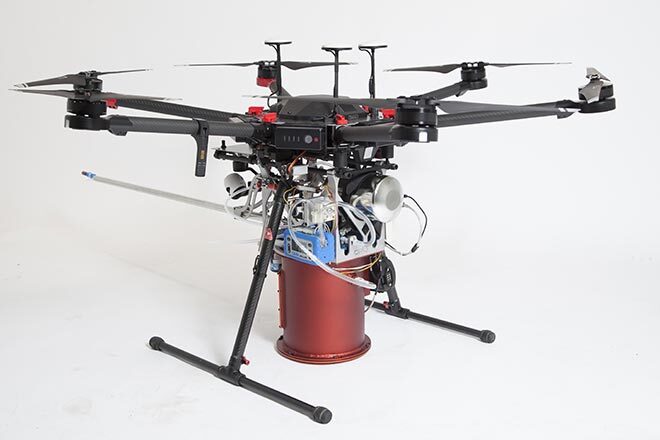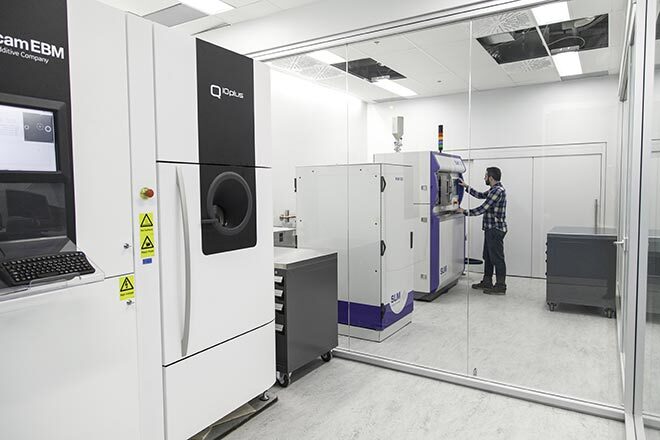Specific Examples of Innovation in Sustainable Engineering

Header image was purchased on Istock.com and is protected by copyright
The Centre de recherche industrielle du Québec is a unique centre of expertise with more than 200 professionals dedicated to creating, identifying and implementing beneficial innovations to the development and competitiveness of Quebec businesses. A government corporation reporting to the Minister of Economy and Innovation, the CRIQ will celebrate its 50th anniversary in 2019. Here are examples of sustainable innovation projects that CRIQ experts, in collaboration with various partners, have recently implemented.
Development of Innovative Environmental Biotechnology Based on Construction Waste to Treat and Deodorize Industrial Air Emissions
This project, in collaboration with Sanimax Inc. and the Centre de transfert technologique en écologie industrielle (CTTEI), won the 2017 Envirolys Award in the Innovation and Environmental Protection category. The solution, to be carried out at the industrial level in the spring of 2019, improves environmental performance combined with a reduction in technology costs, while promoting better cohabitation with shoreline residents (citizens). It exemplifies the application of industrial ecology principles by reclaiming residual materials (concrete residues) that would otherwise be sent to landfills. This solution offers a longer lifespan, compared to conventional biofiltration technologies based on organic materials, while decreasing the frequency and resources needed for its maintenance [1].

Design, Manufacture, and Testing of an Innovative System for Drone-Assisted Ambient Air Quality Characterization
Carried out in collaboration with DroneXperts and The Centre d’expertise en analyse environnementale du Québec (ministère de l’Environnement et de la Lutte contre les changements climatiques MELCC), this innovation project has very interesting economic, environmental and social impacts. The DronAIR project required, over a period of 18 months, the group efforts of a multidisciplinary technical team of more than 15 professionals: engineers, chemists, technicians, drone pilots, etc. This new Clean technologyDescribed by Clean Edge, a clean technology research firm, as “a diverse range of products, services, and processes that harness renewable materials and energy sources, dramatically reduce the use of natural resources, and cut or eliminate emissions and wastes.”Wikipedia. https://en.wikipedia.org/wiki/Clean_technology measures air quality in places previously difficult, if not impossible, to access sustainably and safely. For example, rapid deployment of this technology for environmental monitoring (odour, greenhouse gases, volatile organic compounds) or during emergency operations (accidental spillage of hazardous volatile products, fire, environmental monitoring, etc.) will provide real-time access to reliable geolocated data on the presence and concentration of potentially toxic airborne contaminants and, thereby, speed up decision-making for the authorities (public safety, police, MELCC, etc.). [2].


Creating 3D-Printed Custom Jaw Implants
The CRIQ is working with cranio-maxillofacial surgeons of the CHU of Québec to produce customized patient implants and custom-made devices using an Arcam EBM Q10plus 3D printer for additive manufacturing. Medical certification for 3D-printed implants began in 2017 and is expected to be completed in 2020. Ultimately, this approach will reduce operating room delays, improve patient care, accelerate postoperative recovery, while lowering overall health care costs and risks for this type of intervention [3]. In addition to the medical sector, the potential of 3D printing compared to conventional manufacturing processes yields sustainable development gains for a number of industries such as manufacturing, transportation, aerospace, architecture… The expected benefits are: less material required to manufacture a part, less tooling, more manufacturing flexibility, stock reduction, personalized and decentralized manufacturing, design consolidation, lighter weight, GHG reduction, manufacturing of spare parts that are otherwise unavailable, etc.

Conclusion
These three R & D projects are specific examples of engineers’ contribution in implementing industrial innovations that provide sustainable solutions to current and future economic, environmental and social challenges. They have been made possible through multidisciplinary collaborations with other professionals (PhDs, chemists, microbiologists, physicians, technicians, etc.).


